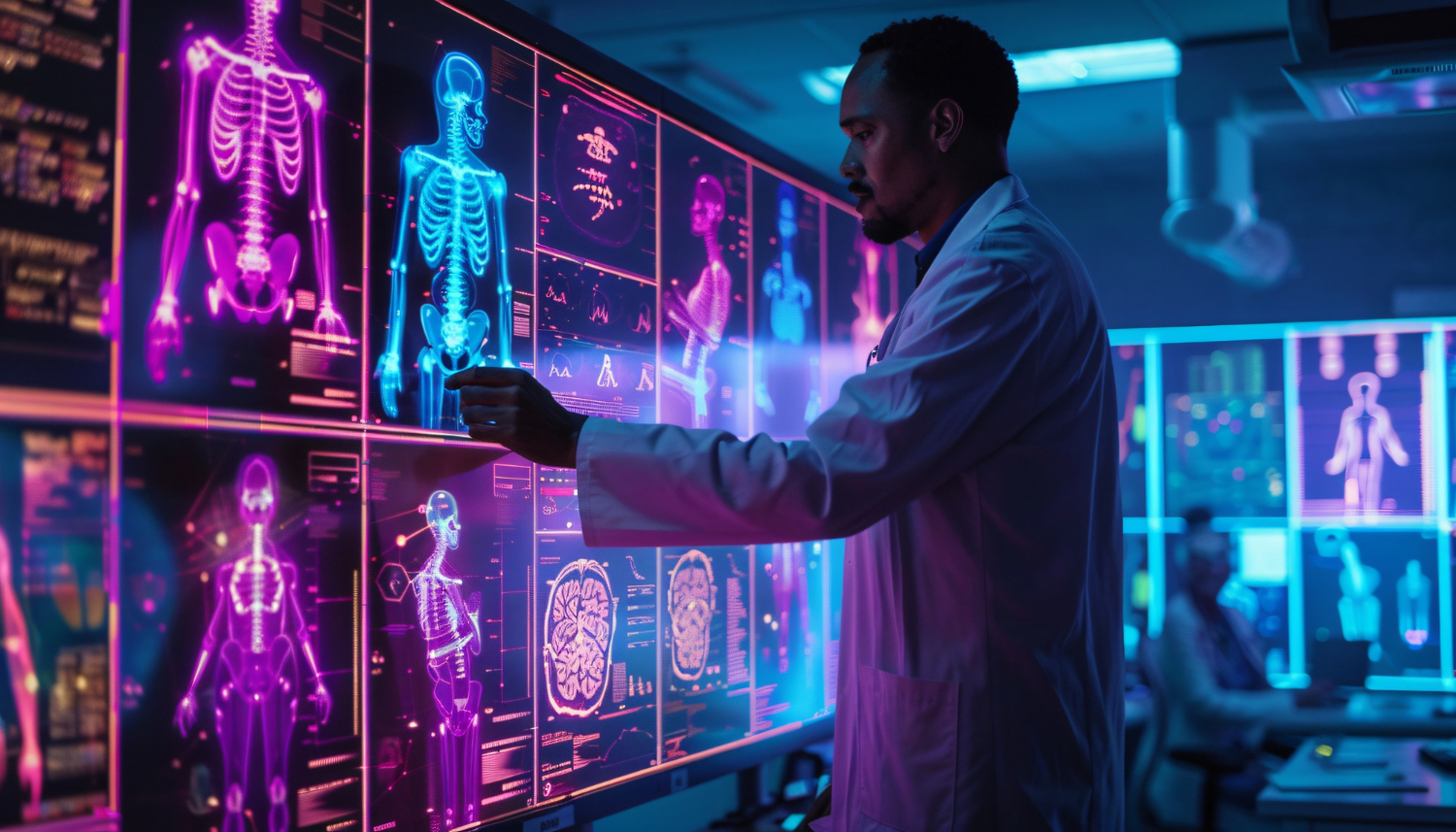Introduction
In today’s fast-paced business environment, the pressure to improve Artificial Intelligence (AI) accuracy, transparency, and fairness is increasing. Not only are organisations striving to comply with stringent regulations such as the EU AI Act, GDPR, and HIPAA, but they are also looking to gain customer trust and mitigate financial risks. The solution? Human-in-the-Loop (HITL) AI.
The Growing Need for Trustworthy AI
Businesses across a range of sectors are increasingly relying on Artificial Intelligence to drive decision-making processes. But the stakes are high. Inaccurate or biased decisions can lead to significant financial losses, reputational damage, and legal repercussions. The need for trustworthy Artificial Intelligence systems that ensure accuracy, transparency, and fairness has never been greater.
The HITL Solution
HITL AI is the clear solution: it integrates human oversight into the decision-making process. This enhances reliability and adaptability of AI systems, while accountability is guaranteed. By involving humans at critical points, HITL AI effectively addresses the limitations of fully automated systems and provides a safety net for high-stakes decisions.
So, what is Human-in-the-Loop AI?
Definition
Human-in-the-Loop (HITL) AI is a model where humans guide Artificial Intelligence decision-making at critical points to improve accuracy and adaptability. This collaborative approach leverages the strengths of both humans and machines, resulting in more robust and reliable Artificial Intelligence systems.
How It Works
The HITL process typically follows these steps:
-
Artificial Intelligence makes a prediction: The Artificial Intelligence system generates an initial prediction or decision based on its training data.
-
Humans review, correct, and provide feedback: Human experts review the AI’s output, make necessary corrections, and provide feedback.
-
Artificial Intelligence learns and improves: The Artificial Intelligence system incorporates feedback to refine its algorithms and improve future performance.
HITL AI Paradigms Explained
To help people understand practical applications, here are some HITL AI paradigms with short examples:
- Active Learning: Artificial Intelligence selects uncertain cases for human review to optimise learning.
Example: A fraud detection AI flags ambiguous transactions for human validation.
- Model Fine-Tuning: Artificial Intelligence improves through continuous human corrections.
Example: AI-powered chatbots learn from human-assisted conversations.
- Hybrid Decision-Making: Artificial Intelligence makes recommendations, but humans make final decisions.
Example: AI suggests medical diagnoses, but doctors verify them.
- Human-on-the-Loop (HOTL): Artificial Intelligence operates autonomously, but humans oversee and intervene when necessary.
Example: Self-driving car systems that allow human takeover.
- Human-over-the-Loop (HOLT): Artificial Intelligence follows human-defined rules but automates execution.
Example: Content moderation Artificial Intelligence applying predefined policies.
When is HITL Beneficial?
When High Accuracy is Critical
In industries where mistakes are costly—such as healthcare, finance, security, and autonomous systems—human oversight is essential. HITL ensures that Artificial Intelligence decisions are accurate and reliable, reducing the risk of costly errors.
When Regulations Demand It
Laws like the EU AI Act, GDPR, and HIPAA require human review in AI-driven decisions to ensure fairness and accountability. HITL helps businesses comply with these regulations by incorporating human oversight into the Artificial Intelligence decision-making process.
When Artificial Intelligence Struggles with Edge Cases
Artificial Intelligence systems can struggle with edge cases—rare or unusual scenarios that fall outside the norm. In such cases, human expertise is invaluable. HITL allows humans to handle these edge cases, ensuring that Artificial Intelligence systems can operate effectively even in unpredictable situations.
When Explainability Matters
Businesses must be able to justify Artificial Intelligence decisions, especially in sensitive areas like hiring, credit scoring, and legal applications. HITL provides the necessary transparency and explainability, allowing businesses to build trust with their customers and stakeholders.
When Training Data is Noisy or Limited
HITL speeds up Artificial Intelligence training by reducing the need for massive labelled datasets, which can take years to build. By incorporating human feedback, HITL allows Artificial Intelligence systems to learn more efficiently and effectively.
When AI Needs to Continuously Adapt
AI models must evolve with market trends, cybersecurity threats, and customer behaviours. HITL enables continuous adaptation by incorporating human feedback into the Artificial Intelligence learning process.
When AI Mistakes are Too Costly
In industries where errors lead to financial loss or reputational damage, HITL acts as a safety net. By involving humans in the decision-making process, businesses can mitigate the risks associated with Artificial Intelligence mistakes.
Implementing HITL in Your Business
How to Modify AI Systems for HITL
To implement HITL in your business, consider the following steps:
-
Add real-time human annotation for key decisions: Incorporate human feedback at critical points to ensure accuracy and reliability.
-
Use confidence thresholds where Artificial Intelligence defers to humans when unsure: Set thresholds for AI confidence levels, deferring to human expertise when the it is uncertain.
-
Implement feedback loops to improve Artificial Intelligence over time: Establish continuous feedback loops to refine AI algorithms and improve performance.
Existing Tools & Frameworks to Simplify HITL
Several tools and frameworks can help businesses implement HITL effectively:
-
Data Labelling: Tools like Scale AI and Labelbox facilitate efficient data labelling and annotation.
-
Workflow Automation: Platforms like Amazon Augmented AI (A2I) and Google AutoML streamline workflow automation.
-
Model Fine-Tuning: Services like Microsoft Azure ML and OpenAI fine-tuning APIs enable continuous model improvement.
Ending notes
HITL isn’t just about compliance—it’s a competitive advantage. Businesses using HITL have more accurate AI, better customer trust, and faster adaptation to market needs. Artificial Intelligence alone isn’t enough—human expertise makes AI smarter.
As artificial intelligence continues to influence key business functions, the need for smarter, more reliable, and adaptive systems grows. Human-in-the-loop (HITL) models give businesses a way to blend the strength of machines with the insight of people. This is where real progress happens—not just in computing power but in balanced, thoughtful decision-making.
Behind every strong HITL system is a structured mix of machine learning models. These include deep learning, supervised learning, and unsupervised learning. Each model plays a role in how data is processed and decisions are made.
In supervised learning, a machine learning algorithm learns from labelled examples. In unsupervised learning, patterns are found in unlabelled data. Deep learning supports complex tasks like image recognition and natural language processing.
But even the best algorithms need human involvement. Data scientists guide how the system is trained. They choose what kind of data set is best.
They decide when the machine needs feedback and what that feedback looks like. This human role ensures that the AI assistant works not just fast but fairly and responsibly.
Computational systems may handle large volumes of data. But they can miss out on nuance. HITL fills this gap. It lets humans add judgement where machines fall short. This improves not only the accuracy but the ethics of AI use.
The interaction between humans and machines is not a one-time fix. It must evolve over time. As data changes, so must the systems that use it.
HITL makes this possible. It allows a machine learning model to update with real-world inputs, guided by human experience.
Human computer interaction is more than a technical design. It’s a strategy. It shapes how users trust AI. When people know there is a human safety net behind the scenes, confidence rises.
Businesses benefit through better outcomes, reduced risk, and stronger customer trust.
When AI systems use HITL, they not only perform better—they become more adaptive. Businesses can respond to change faster. They can test new models with fewer risks. They can stay ahead without losing control.
Adding HITL does not mean slowing down innovation. It means guiding it. It gives AI a clearer path. Data scientists make sure that path stays on course.
Whether you’re using supervised learning for credit checks or deep learning for content recommendations, HITL brings balance and control.
AI alone may process data quickly. But with HITL, it learns from context. It gains insight it cannot find on its own. That’s what turns machine learning into intelligent support.
Integrating HITL into your Artificial Intelligence strategy is the key to gaining the trust of your customers and staying ahead of the competition by ensuring accuracy, transparency, and reliability. Don’t wait—take action now and unlock the full potential of your Artificial Intelligence systems with TechnoLynx!
Image credits: Freepik













